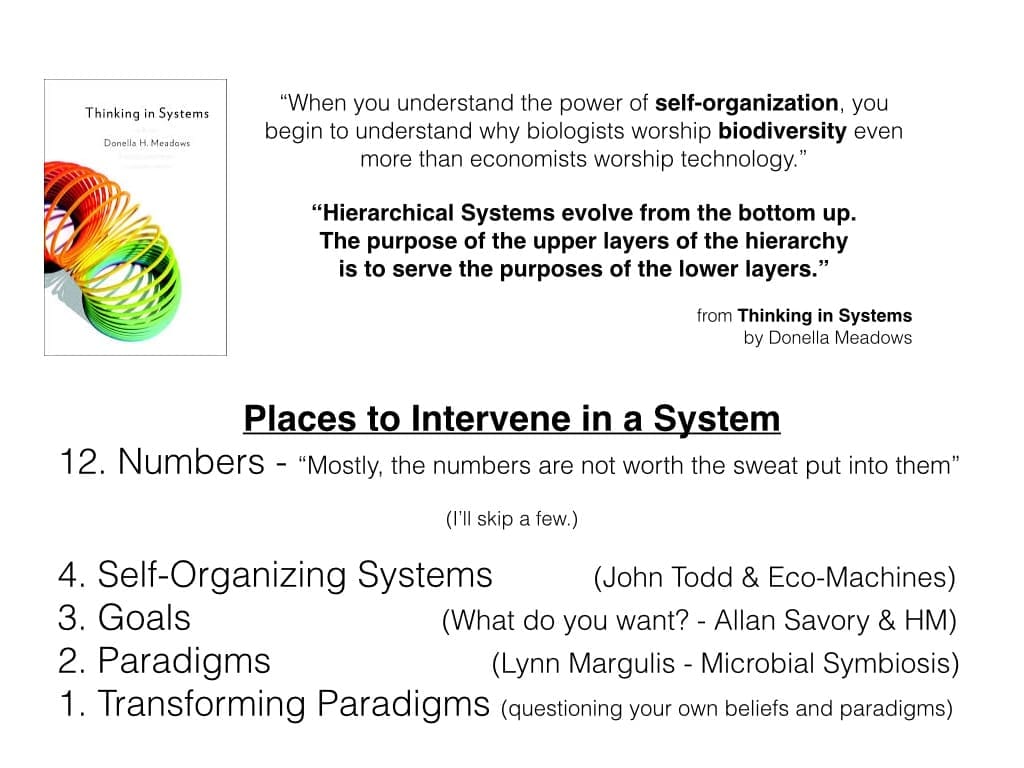Biodiversity 6: Systems Thinking & Scenarios – Tools for Creating Better Ecological Futures
Summer 2022, Wednesdays, June 22 – September 7

12 weekly classes with our staff scientist, Jim Laurie. He will hold two sessions every Wednesday, from 12 – 2 pm ET and 7 – 9 pm ET to accommodate students’ different schedules.
The Excitement and Inspiration of Science for the Curious to the Serious and everyone in-between. A fully interactive online adventure with discussions, experiments and explorations for independent thinkers of any age, suitable for high school and college students, as well as inquiring minds of all levels, from beginner to PhD!
Course Description
In this sixth course in the Biodiversity series, we will take on the question, “could humans be a global force for the reemergence of healthy ecosystems on a much faster timeline?” by looking at systems thinking and scenario-writing.
Systems Thinking is a way of zooming out and looking at the Big Picture. Fifty years ago, in 1972, Donella (Dana) Meadows was lead author of Limits to Growth, which cautioned humanity about continuing growth in population and consumption. Limits to Growth concluded that if we did not transform our society to follow a more sustainable path, we could face ecosystem and societal collapse in the 21st Century. Dana spent the rest of her life teaching Systems Thinking and helping people see the “Whole” as well as the details. To build a healthier future, we are now learning about systems at all scales. We are finding microbiomes creating soils in forests and grasslands. Aquatic systems also have microbiomes whether you are in saltwater, freshwater, even in the human gut.

Writing Scenarios is another tool used by planners, strategists, and futurists. Scenarios use timelines to anticipate the future and make estimates of changes that could occur. There are many kinds: possible futures, probable futures, pessimistic futures, etc. There are also Preferable Futures where we try to imagine a world we would like to help create and live into. My effort at writing Scenario 300 in 2017 looks forward over several decades at what might be possible if our species focused on symbiosis and connections. It isn’t a prediction, but a starting point for decision making.
Every extinction episode in Earth’s evolutionary history has led to an emergence of greater biodiversity in time. Often the time scale is in millions of years. With the vast new knowledge that is now available to us, could humans be a global force for the reemergence of healthy ecosystems on a much faster timeline? Let’s find out.
Books used in this course:
- Thinking in Systems by Donella Meadows (Primary Text)
- The Ministry for the Future by Kim Stanley Robinson
- Under a Green Sky by Peter Ward
- Innovative Methods of Marine Ecosystem Restoration Edited by Tom Goreau & Robert Trench (No purchase needed.)
Whether this is your first or sixth course, please join us if you are curious about nature and its power to restore ecosystems to abundance. The veterans of previous classes will help you catch up in your learning. We are developing into a “Symbiosis Team” to ameliorate or reverse the impacts of Global Warming. Everyone has much to learn and share and there is much to be done. We need and appreciate your enthusiasm on the team. To join us, register below!

